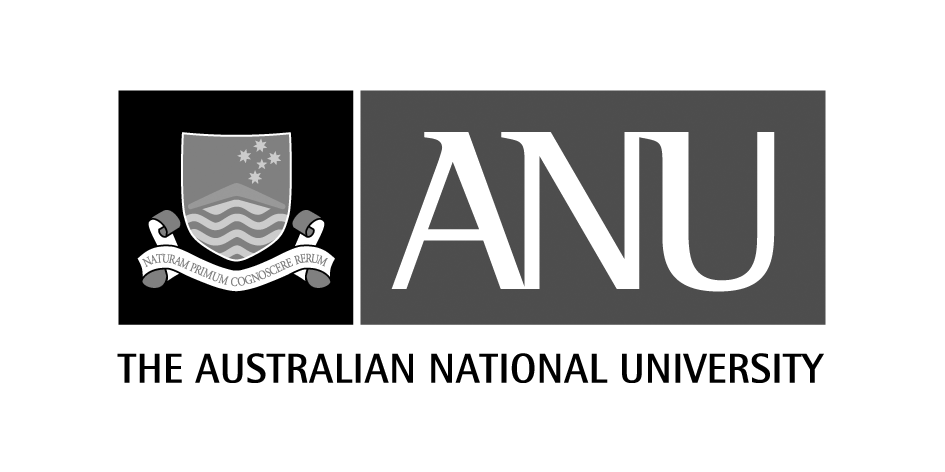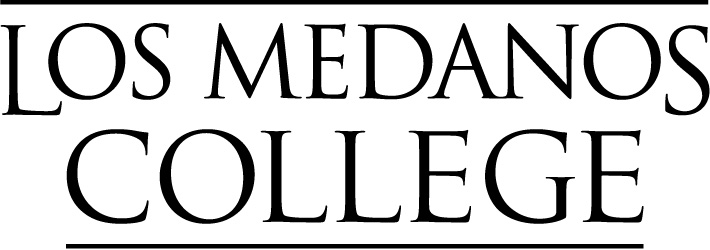cell transport questions 1. (a) describe a chemical test you could carry out to show that a piece of coconut contains lipids. ..........
CELL TRANSPORT QUESTIONS
1. (a) Describe a chemical test you could carry out to show that a
piece of coconut contains lipids.
.....................................................................................................................................
.....................................................................................................................................
.....................................................................................................................................
.....................................................................................................................................
.....................................................................................................................................
.....................................................................................................................................
(3)
(b) The diagram shows the structure of a phospholipid molecule,
i.
N ame the part of the molecule labelled Y
..................………………………………...............
(1)
(ii) Describe how a phospholipid molecule differs in structure from
a triglyceride molecule
.........................................…………………………………………………………………………………….................................................................................
(1)
(iii) Chitin is a nitrogen-containing polysaccharide. Name one
chemical element present in a phospholipid which would not be present
in chitin.
...........................................................................................................................
(1)
(c) An artificial membrane was made. It consisted only of a bilayer of
phospholipid molecules. In an investigation, the permeability of this
artificial membrane was compared with the permeability of a plasma
membrane from a cell. Explain why:
(i) both membranes allowed lipid soluble molecules to pass through
...........................................................................................................................
...........................................................................................................................
(1)
(ii) only the plasma membrane allowed glucose to pass through.
...........................................................................................................................
...........................................................................................................................
...........................................................................................................................
...........................................................................................................................
(2)
(Total 9 marks)
2. The diagram represents part of an animal cell which has been put in
distilled water.
(a) Use the diagram to:
(i) explain why the water potential of the distilled water is higher
than the water potential of the cytoplasm of the cell;
...........................................................................................................................
...........................................................................................................................
...........................................................................................................................
...........................................................................................................................
(2)
(ii) describe the property of the cell surface membrane which allows
osmosis to take place.
...........................................................................................................................
...........................................................................................................................
(1)
(b) Osmosis has been described as a special case of diffusion.
Describe two ways in which you would expect the movement of water into
a cell by osmosis to be similar to the diffusion of oxygen into a
cell.
1...................................................................................................................................
.....................................................................................................................................
2...................................................................................................................................
.....................................................................................................................................
(2)
(Total 5 marks)
3. (a) The table shows some similarities and some differences between
osmosis, active transport and facilitated diffusion. Complete the
table with a tick if the feature applies or with a cross if it does
not apply.
Feature
Osmosis
Active transport
Facilitated
diffusion
Requires energy from ATP
Requires protein carrier molecules
Can take place against a concentration gradient
(3 marks)
(b) An investigation was carried out into the effects of temperature
on the rate of diffusion of chloride ions. Slices of carrot were
placed in distilled water at different temperatures. After 10 minutes
the concentration of chloride ions in the distilled water was
measured. The results are shown in the graph.
(i) Explain the increase in the rate of diffusion between 14°C and
40°C.
...........................................................................................................................
...........................................................................................................................
...........................................................................................................................
(2)
(ii) Suggest what caused the sudden increase in the rate of diffusion
at 40°C.
...........................................................................................................................
...........................................................................................................................
...........................................................................................................................
(2)
(Total 7 marks)
4. The graph shows the expected and actual results of an experiment to
investigate the uptake of glucose by human red blood cells.
(a) Curve B shows the result that would be expected if glucose enters
the red blood cells by simple diffusion.
(i) State Fick’s Law.
...........................................................................................................................
...........................................................................................................................
(1)
(ii) Explain how Curve B demonstrates one aspect of Fick’s Law.
...........................................................................................................................
...........................................................................................................................
(1)
(b) Curve A shows the results obtained from the red blood cells. It
shows that these cells took up glucose by facilitated diffusion.
Explain the shape of the curve at glucose concentrations:
(i) less than 2 mmol dm–3;
...........................................................................................................................
...........................................................................................................................
(2)
(ii) greater than 5 mmol dm–3.
...........................................................................................................................
...........................................................................................................................
(1)
(Total 5 marks)
5. A kidney consists of a large number of very small tubes called
kidney tubules. Some of the cells which line these tubules are able to
absorb glucose. The diagram shows how these cells absorb glucose from
the contents of the tubule and secrete it into the blood.
(a) Glucose moves into the cell by facilitated diffusion. Osmosis also
takes place across the plasma membrane.
Give two differences between facilitated diffusion and osmosis.
1...................................................................................................................................
.....................................................................................................................................
2...................................................................................................................................
.....................................................................................................................................
(2)
(b) Explain the link between active transport and the presence of
large numbers of the organelles labelled A in this cell.
.....................................................................................................................................
.....................................................................................................................................
.....................................................................................................................................
.....................................................................................................................................
.....................................................................................................................................
(3)
(c) Explain two ways, shown in the diagram, in which the structure and
activities of this cell ensure efficient absorption of glucose from
the inside of the kidney tubule.
1...................................................................................................................................
.....................................................................................................................................
2...................................................................................................................................
.....................................................................................................................................
(2)
(Total 7 marks)
6. Answers should be written in continuous prose. Credit will be given
for biological accuracy, the organisation and presentation of the
information and the way in which the answer is expressed.
The diagram shows the arrangement of protein molecules in part of a
cell surface membrane.
(a) Explain how amino acid molecules may be linked to form a
polypeptide chain which is folded into a specific tertiary shape.
.....................................................................................................................................
.....................................................................................................................................
.....................................................................................................................................
.....................................................................................................................................
.....................................................................................................................................
(6)
(b) Describe the role of proteins in the transport of molecules and
ions across cell surface membranes.
.....................................................................................................................................
.....................................................................................................................................
.....................................................................................................................................
.....................................................................................................................................
.....................................................................................................................................
(7)
(c) The hormone glucagon is a protein. It targets liver cells but does
not affect other cells in the body. Explain why.
.....................................................................................................................................
.....................................................................................................................................
.....................................................................................................................................
.....................................................................................................................................
.....................................................................................................................................
(4)
(Total 17 marks)
CELL TRANSPORT ANSWERS
1. (a) (Crush in) ethanol / alcohol;
Add (to) water (Order of adding is critical for this point);
Emulsion / white colour;
(3)
(b) (i) Glycerol / glyceride;
(1)
(ii) Phospholipid has phosphate / phospholipid only has two fatty
acids;
(1)
(iii) Phosphorus / P;
(1)
(c) (i) Both membranes contain phospholipid / lipid (bilayer);
(1)
(ii) Glucose unable to pass through artificial membrane as not lipid
soluble;
Glucose transported by proteins;
(Proteins) found in plasma membrane / not found in artificial
membrane;
(MAX 2)
(Total 9 marks )
2. (a) (i) More “free” water molecules outside cell / in distilled
water;
water molecules inside cell “bound” to solute molecules;
link between water molecules, pressure they exert and water potential;
water potential of distilled water =0;
presence of solute reduces water potential;
(Max 2)
(ii) Partially permeable / only allows water molecules through / does
not allow
solute molecules though;
(1)
(b) Passive / does not require ATP; R energy not required
movement down gradient; R across
does not require carrier molecules / not facilitated;
(Max 2)
(Total 5 marks)
3. (a)
Feature
Osmosis
Active transport
Facilitated diffusion
Requires energy from ATP
x
x
Requires protein carrier molecules
x
Can take place against a concentration gradient
x
x
Mark down, one mark for each correct column
(3)
(b) (i) Molecules are moving faster;
they have more (kinetic) energy;
so more molecules will pass through the membrane in given time;
(Max 2)
(ii) Temperature affected cell membrane;
by for example, denaturing the proteins;
(2)
(Total 7 marks)
4. (a) (i) ((rate of) uptake / diffusion is proportional to)
;
(1)
(ii) Rate (of uptake) is proportional to concentration (of glucose);
(1)
(b) (i) Facilitated diffusion involves carrier / protein molecules (in
membrane);
(free proteins / carriers) still available as more glucose added /
glucose is a limiting factor / eq;
(2)
(ii) Carrier / protein molecules saturated / limiting factor;
(1)
(Total 5 marks)
5. (a) Osmosis only involves movement of water;
Facilitated diffusion involves proteins / carriers; 2
(b) Organelle A / mitochondria site of respiration;
Release energy / produce ATP; (R make energy in context of this point)
Energy / ATP necessary for active transport;
To move substances against concentration gradient; MAX. 3
(c) Presence of microvilli / folded membrane increases surface area;
(R if organelle incorrectly identified)
Removal of glucose out of cell increases / maintains concentration
gradient; 2
(Total 7 marks)
6. (a) Condensation;
removal of water molecule;
from amino and carboxyl groups;
forming peptide bonds;
same amino acids in same sequence;
bonds form between R-groups/side chains;
e.g. sulphur-containing amino acids / ionic bonds / hydrogen bonds;
bonds form in same place; MAX. 6
(b) Allows passage of charged particles / ions;
allows passage of water soluble / large molecules;
channel proteins / proteins with pores;
specificity related to diameter / charge;
carrier proteins;
specificity lined to shape of receptor sites;
functions by changing shape / conformation;
facilitated diffusion with concentration gradient;
active transport against concentration gradient;
active transport requiring energy / ATP; MAX. 7
(c) Glucagon has specific shape / structure;
receptor molecules with specific receptor sites;
concept of fitting;
glucagon receptors only on liver cells; MAX. 4
(Total 17 marks)
 CÁMARA AUTOTRANSPORTE TERRESTRE INTERNACIONAL DEL URUGUAY SOLICITUD DE INSCRIPCIÓN
CÁMARA AUTOTRANSPORTE TERRESTRE INTERNACIONAL DEL URUGUAY SOLICITUD DE INSCRIPCIÓN NOMINATION OF EXAMINERS PHDMPHIL PLEASE OBTAIN APPROVALS AND
NOMINATION OF EXAMINERS PHDMPHIL PLEASE OBTAIN APPROVALS AND PROGRAMMATISK BRUK AV DATABASER 2 ADONET 2 VBNET OG
PROGRAMMATISK BRUK AV DATABASER 2 ADONET 2 VBNET OG PRESS RELEASE VIENNA 10 JULY 2008 AGRANA
PRESS RELEASE VIENNA 10 JULY 2008 AGRANA  ORDIN NR 1284 DIN 17 DECEMBRIE 2012 PRIVIND REGLEMENTAREA
ORDIN NR 1284 DIN 17 DECEMBRIE 2012 PRIVIND REGLEMENTAREA STUDENT CLUB CHARTER CHECKLIST 20202021 1 COMPLETE A CLUB
STUDENT CLUB CHARTER CHECKLIST 20202021 1 COMPLETE A CLUB SOLICITUD GENERAL DDÑA……………………………………………………CON DNINIECIF ………………… Y DOMICILIO EN LA
SOLICITUD GENERAL DDÑA……………………………………………………CON DNINIECIF ………………… Y DOMICILIO EN LA ZAŁĄCZNIK NR 27 DO REGULAMINU ZASADY PRZELICZANIA OCEN 1
ZAŁĄCZNIK NR 27 DO REGULAMINU ZASADY PRZELICZANIA OCEN 1